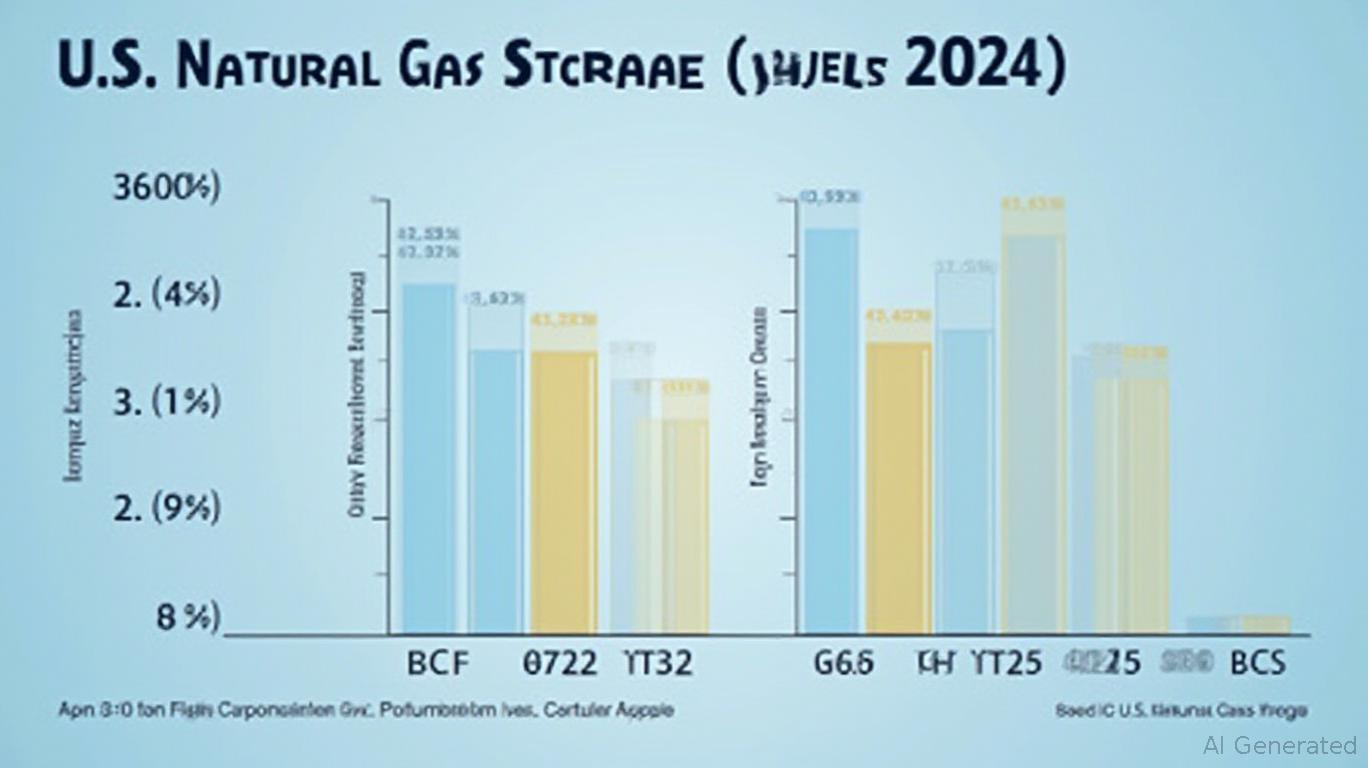Natural Gas Inventory Build Signals Summer Tightness: Positioning for Pricing Volatility
The latest U.S. Energy Information Administration (EIA) natural gas storage report, released on May 30, 2025, reveals a market teetering between short-term oversupply and long-term structural tightness. With inventories at 2,476 Bcf as of May 23—4% above the five-year average but 11% below 2024 levels—the data underscores a critical inflection point for summer pricing and hedging strategies.
Inventory Dynamics: A Mixed Forecast
The May 23 injection of 101 Bcf matched market expectations, marking a steady but constrained build season. However, the year-over-year deficit of 316 Bcf highlights lingering supply-demand imbalances.

The deficit is driven by three factors:
1. LNG Export Growth: New terminals (e.g., Plaquemines Phase 1) have boosted feedgas demand to 15.7 Bcf/d, diverting supply from domestic storage.
2. Regional Weather: Mild spring weather in key demand hubs like the
3. Production Constraints: While output remains robust at 111.8 Bcf/d, declining well productivity in shale basins—particularly outside the Marcellus—has slowed growth.
Pricing Implications: Summer Volatility Ahead
The EIA now forecasts the Henry Hub spot price to average $4.10/MMBtu in 2025 and $4.80/MMBtu in 2026, up from earlier projections. This reflects expectations of tighter balances as:
- Injection season ends below the five-year average (projected 3,670 Bcf by October).
- LNG exports expand further, with 22% growth in 2025 and 10% in 2026.
Hedging Strategies: Navigating the Tightrope
Investors and producers must balance near-term oversupply with long-term fundamentals:
1. For Producers (e.g., Antero Resources, Coterra Energy):
- Lock in Current Prices: With the EIA's upward price revisions, hedging 30–40% of 2026 production via futures or call options at $4.50/MMBtu could mitigate downside risk.
- Monitor Regional Differentials: The Permian Basin's negative spot prices (due to pipeline constraints) and the Northeast's premium (driven by LNG demand) offer arbitrage opportunities.
- For Utilities and Traders:
- Short-Term Shorts: Take bearish positions in July futures ($3.55/MMBtu as of May 28) if storage builds exceed expectations or weather moderates.
- Long-Term Bull Call Spreads: Target strikes above $5.00/MMBtu for 2026 contracts to capitalize on structural deficits.
Risks to the Outlook
- Crude Oil Prices: Falling WTI prices below $60/bbl could curb associated gas production, exacerbating supply tightness.
- Pipeline Constraints: Maintenance on the Katy Pipeline (Texas to Louisiana) and Permian takeaway limits may persist, creating regional imbalances.
Conclusion: Position for the Cycle's Turn
The May inventory report signals that the natural gas market is transitioning from post-winter surplus to summer-driven volatility. While near-term prices may remain pressured by ample supply, the structural deficit—driven by export growth and production limits—supports a bullish bias for 2026.
Investment Takeaway:
- Producers: Hedge 30–40% of future production now to secure margins.
- Traders: Use short-term bearish bets (July futures) and long-term bullish options to profit from the cycle's inflection.
The data is clear: summer's storage dynamics will determine whether prices stabilize or surge—a risk no market participant can afford to ignore.

Comments
No comments yet